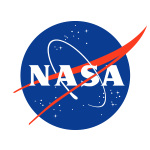Testing of the Radio Frequency Mass Gauge on Parabolic Flights (T0007-P) (RFMG)
Project Description
Testing of RFMG during parbolic flight tests to collect multiple RFMG data sets during low-gravity paraboloas t several different tank fluid fill levels, and compare the guaged result with the known fluid quanity.
The Radio Frequency Mass Gauge measures the electromagnetic eigenmodes, or natural resonant frequencies, of a tank containing a dielectric fluid. The essential hardware components consist of a tank, an RF network analyzer, and a computer. At a resonant frequency there is a drop in the reflected RF power, and these inverted peaks in the reflected power spectrum are identified as the tank eigenmode frequencies using a peak-detection software algorithm. This information is passed to a pattern matching algorithm, which compares the measured eigenmode frequencies with a database of simulated eigenmode frequencies at various fill levels. The database of simulated eigenmode frequencies is created in advance using RF simulation software to calculate the tank eigenmodes at various fill levels and liquid configurations. A best match between the simulated and measured frequency values occurs at some fill level, which is then reported as the gauged fill level. A patent application was filed for the RFMG in Sep. 2009.
The RFMG data collection is highly automated, and the operator needs only to start the software and initiate the gauging operations and monitor the experiment. During low-g aircraft testing, the FC-77 fluid fill level in the 30 gallon tank was changed on the ground before each series of parabolic flights. Approximately 40 parabolas of data are gathered at each fluid fill level tested, providing a large data set for post-flight analysis.
Anticipated Benefits
Provided multiple parbolic flights so testing could be done to further the development of the RFMG for the NASA Enabling Technology Development and Demonstration Program.
Commerical niche applications of RFMG may include guaging of cryogenic liquid storage tanks and aircraft fuel tanks.
More »
Suggest an Edit
This is a historic project that was completed before the creation of TechPort on October 1, 2012. Available data has been included. This record may contain less data than currently active projects.

